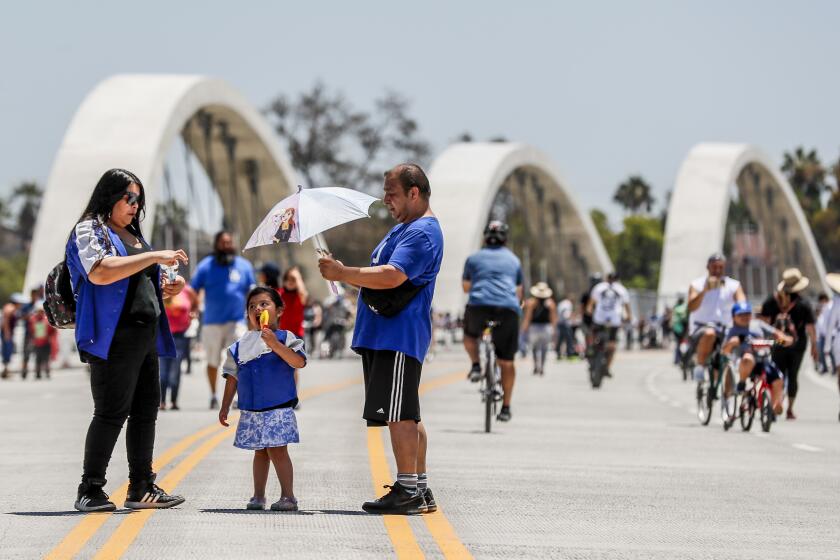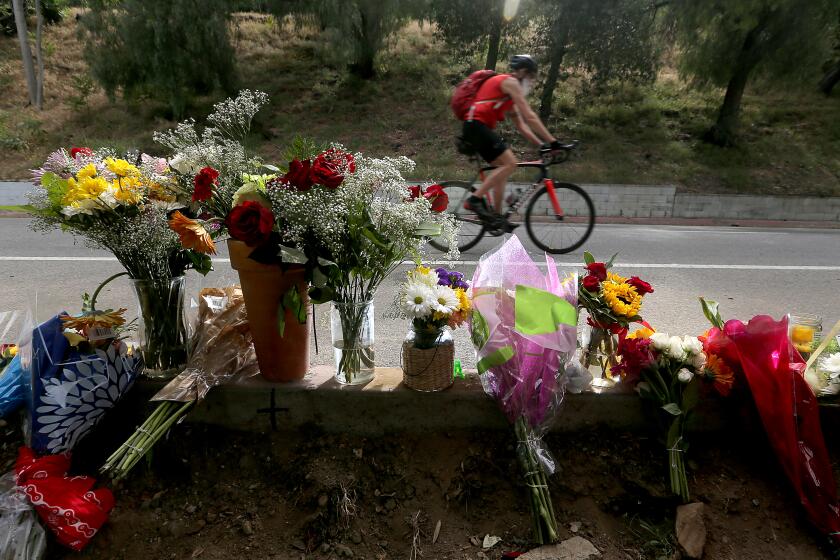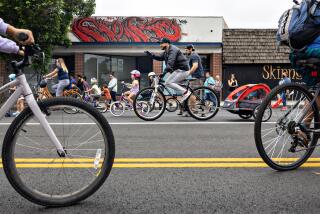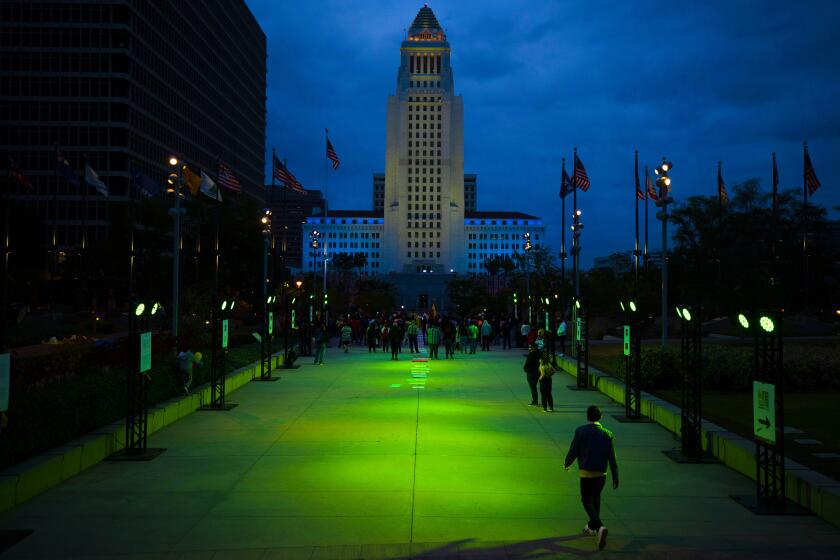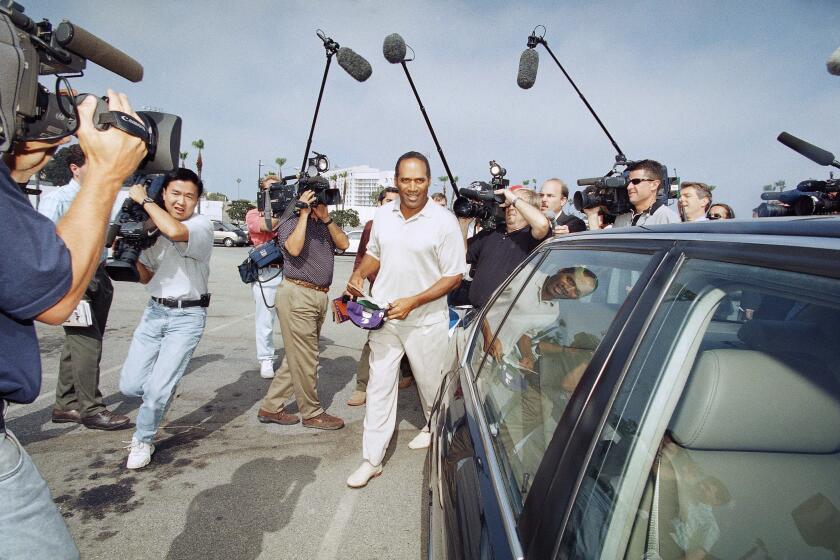Commentary: Another deadly car crash. We can’t keep waiting for safer streets
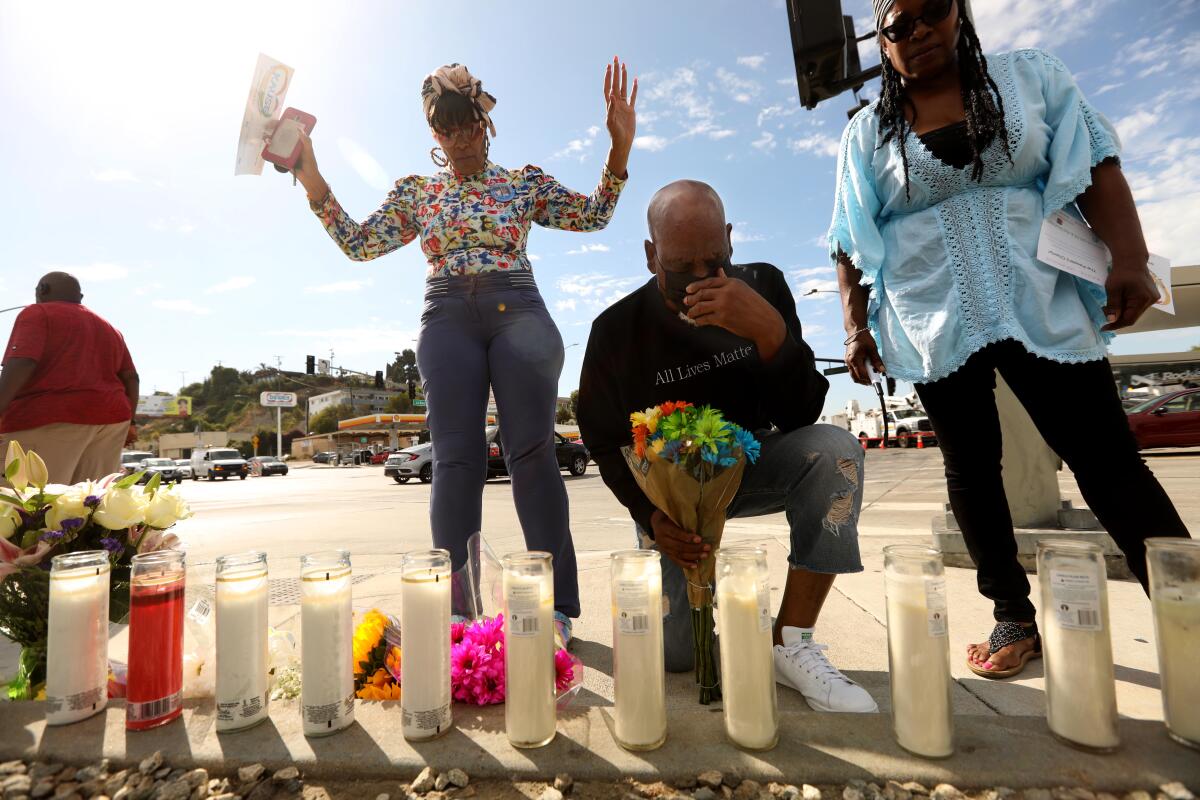
A sidewalk memorial acknowledges the lives lost in a fiery Aug. 4 multi-vehicle crash in Windsor Hills.
It’s been a little more than a week, but the wreckage and horror of a fiery fatal crash in Windsor Hills are still on my mind. Five people, including a woman 8½ months pregnant, were killed when a motorist in a Mercedes-Benz sedan speeding 90 mph blew through a red light and plowed into several cars. Vehicles burst into flames. Billowing smoke could be seen for miles away. The victims were just driving across town, running errands or heading to the doctor’s office, and their lives were snuffed out in an instant.
We talk a lot about gun violence in this country — as well we should — but almost as many people were killed by motor vehicles as by firearms in 2020. Cars have become significantly safer for drivers and their passengers, with airbags, seat belts and crash-impact protections, yet traffic deaths are on the rise. Nearly 43,000 people died in motor vehicle crashes in 2021, a 10.5% increase over the prior year.
Speed, reckless driving, inattention and driving while intoxicated are to blame. And so is our infrastructure, particularly in Los Angeles. The streets are dangerous by design. Just look at the intersection of Slauson and La Brea avenues in Windsor Hills, where the crash happened. The wide, seven-lane roads are designed to move cars as quickly as possible. And these kinds of streets — highways, really — are all over the Los Angeles area because for decades the goal of transportation planning was to build fast, free-flowing roads for the convenience and speed of drivers. Good luck to pedestrians and bicyclists.
The viaduct was built for cars, but it should be reclaimed for people.
There is a movement to stop the carnage. Earlier this year, Transportation Secretary Pete Buttigieg announced a new national strategy and funding to make streets safer. It calls for redesigning the entire transportation system, from road engineering to vehicle standards, to avoid crashes and to reduce the likelihood of serious injury and death when crashes occur. Humans make mistakes (sometimes, horrible ones), so road design should slow traffic speeds, force drivers to be more cautious and carve out safe spaces for pedestrians and bicyclists to share the road.
What would that look like in practice? Reducing lanes of traffic, allowing street parking, adding street trees, building curb extensions at crosswalks and medians are all simple fixes that can change how people psychologically perceive and respond to a street, according to the National Assn. of City Transportation Officials.
In 2015, Los Angeles adopted an ambitious 20-year plan to design and build streets to make it safer and easier for people to bike, walk and take public transit. It also included a goal to eliminate traffic fatalities by 2025. But since the adoption of Mobility Plan 2035, the city has made upgrades to only 95 miles of 3,137 miles identified in the plan — or less than 3% in a little more than six years.
Frustrated that L.A. leaders have slow-walked street improvements that could save lives, several transportation and environmental groups collected enough signatures to put the “Healthy Streets LA” measure on the 2024 ballot. The measure would force the city to add the promised bus, bike and pedestrian improvements when streets are repaved.
It’s high time that Los Angeles prioritizes Griffith Park users over commuters.
Yes, it’s infuriating that activists would need to spend more than a million dollars and thousands of volunteer hours to come up with a ballot measure to force the city to implement its own visionary plan. Voters could help transform L.A.’s deadly streets in 2024, or the City Council could act sooner by adopting the language of the “Healthy Streets LA” measure immediately rather than send it to the ballot. City Council President Nury Martinez has also introduced a comprehensive plan to ensure public works projects not only incorporate mobility plan elements but also crosswalks, bus shelters, streetlights, stormwater infrastructure, sidewalk repairs and street trees — all of which will make city streets safer and more enjoyable for everyone who uses them.
Aren’t you tired of seeing bits of vehicle debris and shattered glass in the streets, left over from collisions? Or feeling hesitant as you enter an intersection because, who knows if some speeding driver will mow you down? Or worrying that your loved ones will leave home on an errand and never return? I know I am. There’s no more time to wait for safer streets.
More to Read
A cure for the common opinion
Get thought-provoking perspectives with our weekly newsletter.
You may occasionally receive promotional content from the Los Angeles Times.
